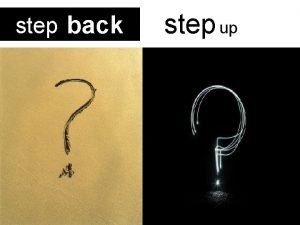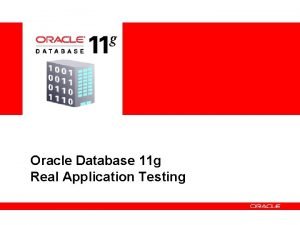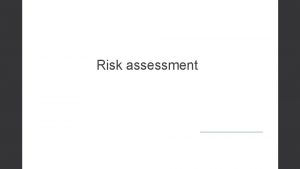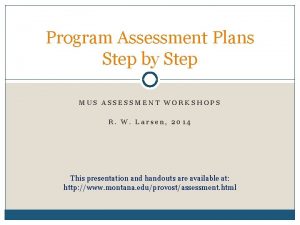Risk assessment Risk assessment is a step in













- Slides: 13

Risk assessment

Risk assessment is a step in a risk management procedure. Risk assessment is the determination of quantitative or qualitative value of risk related to a concrete situation and a recognized threat (also called hazard). Quantitative risk assessment requires calculations of two components of risk (R): , the magnitude of the potential loss (L), and the probability (p) that the loss will occur.


Link between hazard and effect Natural Hazards Anthropogenic activities Emissions effluents Environmental Concentration Air Water Food Exposure External Exposure Absorbed Dose Target Organ Dose Health Effects Subcilnical Effects Morbidity Mortality Soil

Comprehensive assessment model 屋外 Outdoor 土壌直接摂食 Direct ingestion 土壌直接吸入 Soil inhalation ガス吸入 Gas inhalation 皮膚吸収 Dermal contact 作物 Food intake deposition 沈着 vaporization 土壌飛散 室内 Indoor Exposure 曝露 移流 migration 希釈 土壌直接吸入 Soil inhalation ガス吸入 Gas inhalation 皮膚吸収 Dermal contact Exposure 曝露 ガス拡散 gas emission ガス拡散 作物 plant シャワー shower 飲料水 water adsorption 吸収 Soil 土壌 井戸 Well 土壌空隙 Soil pore space 浸透・拡散 Permeation Pore間隙水 water Contaminated soil 浸透・拡散 Infiltration Groundwater 地下水

Exposure pathways and distribution Arsenic Soil Air Indoor, Outdoor Air Groundwater permeation Drinking Water 0% 0. 3% 0% 0% Exposure paths and the distribution of the exposure paths (Lifetime aged 0 to 70) Inhalation Dermal Soil Content deposition soil dispersal Pore Water Oral Crops absorption volatilization 49. 2% 10. 8% 39. 8%

Exposur e Media Air, Water, dirt etc. exhalation ingestion Gltract bile Transport and Distribution Other organs Sw eet Major excretory pathways Respirator y tract Skin Major uptake pathways Food, Water, drugs external Hai r contamination Skin Blood Liver Kidney Urine Fece s

Results of the Risk/exposure assessment The exposure rates and contribution of the different exposure paths of children (aged 0 to 6), adults (aged 7 to 70) and lifetime (aged 0 to 70).

Risk Management and Exposure Control Filter system Catalysis cartridge Control of exposure removal of contaminants control of exposure pathways Water, dust, soil, sediments, foods Risk reduction/mitigations and/or tradeoff alternative way and/or substitution social activities and communication Risk/exposure reduction Clean tap water Wastewater treatment Voluntary management Biotope system Cost-effectiveness Risk management Cultural oriented, low cost, and high performance mitigation

Three steps of risk assessment Hazard Identification, aims to determine the qualitative nature of the potential adverse consequences of the contaminant (chemical, radiation, noise, etc. ) and the strength of the evidence it can have that effect. This is done, for chemical hazards, by drawing from the results of the sciences of toxicology and epidemiology.

Dose-Response Analysis, is determining the relationship between dose and the probability or the incidence of effect (dose-response assessment). The complexity of this step in many contexts derives mainly from the need to extrapolate results from experimental animals (e. g. mouse, rat) to humans, and/or from high to lower doses. In addition, the differences between individuals due to genetics or other factors mean that the hazard may be higher for particular groups, called susceptible populations.

Exposure Quantification, aims to determine the amount of a contaminant (dose) that individuals and populations will receive. As different location, lifestyles and other factors likely influence the amount of contaminant that is received, a range or distribution of possible values is generated in this step. Particular care is taken to determine the exposure of the susceptible population(s).

Finally, the results of the three steps above are then combined to produce an estimate of risk. Because of the different susceptibilities and exposures, this risk will vary within a population.
 Step 1 step 2 step 3 step 4
Step 1 step 2 step 3 step 4 Liquidity measures
Liquidity measures Incisor labiality
Incisor labiality Creating a dinosaur sculpture step by step
Creating a dinosaur sculpture step by step How to write an informative essay step by step
How to write an informative essay step by step Steps of an argumentative essay
Steps of an argumentative essay Step back step up
Step back step up Solving quadratic equations step by step
Solving quadratic equations step by step 2 systems of equations calculator
2 systems of equations calculator Simultaneous equations step by step
Simultaneous equations step by step Combine like terms steps
Combine like terms steps The steps of photosynthesis
The steps of photosynthesis Particle filter example step by step
Particle filter example step by step Oracle real application testing step by step
Oracle real application testing step by step























